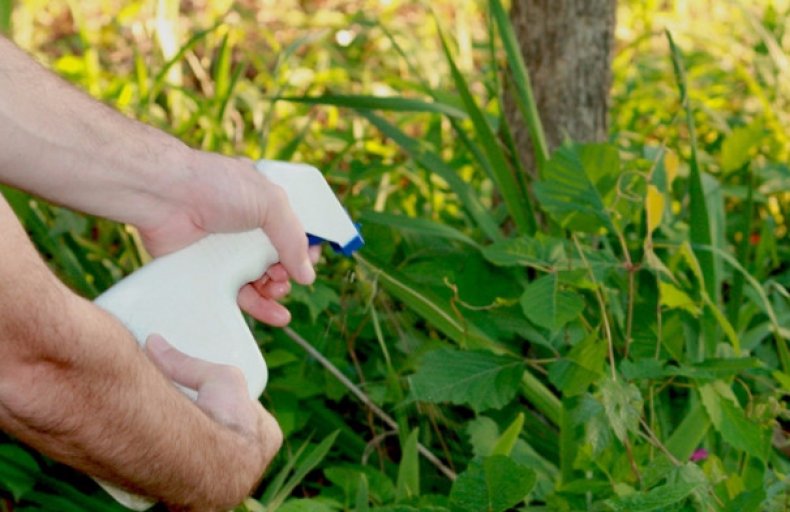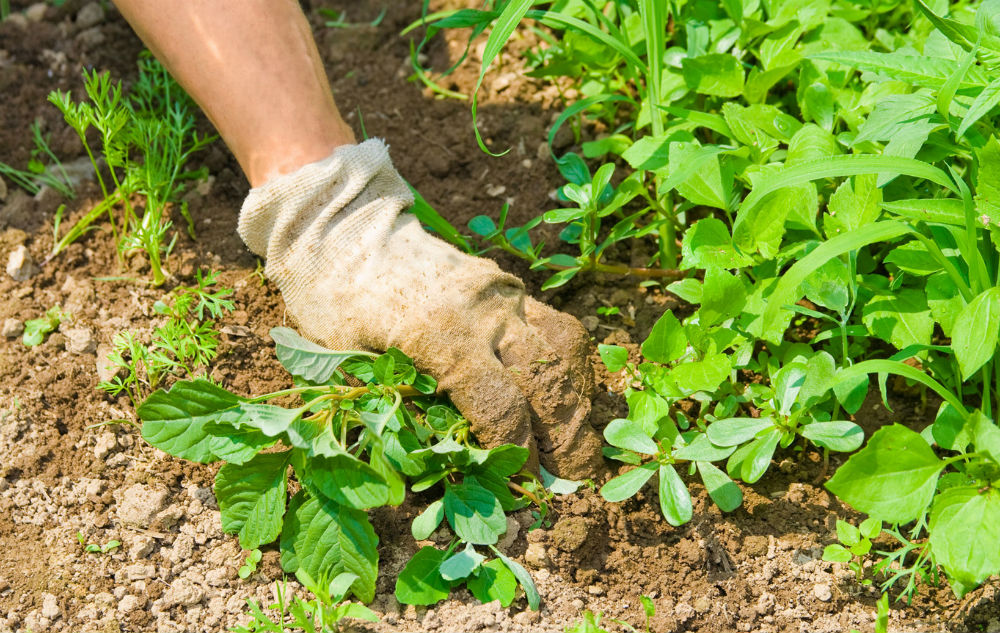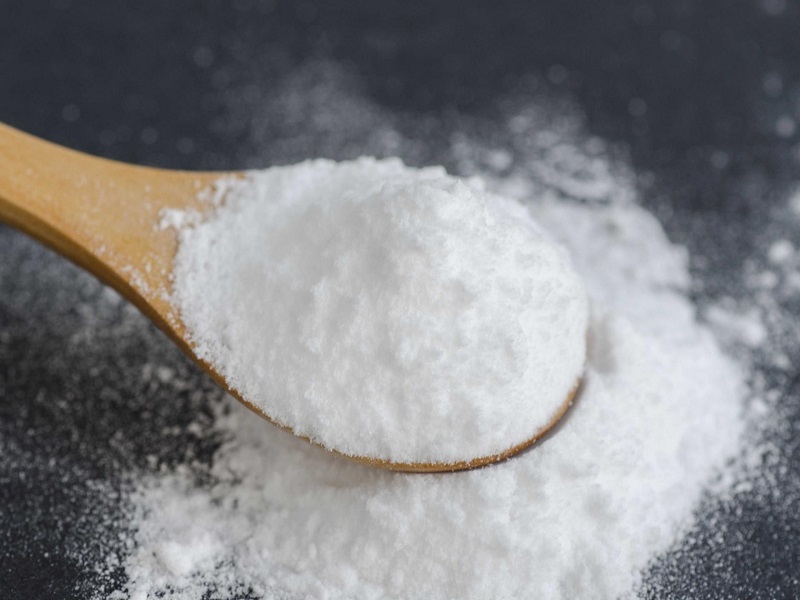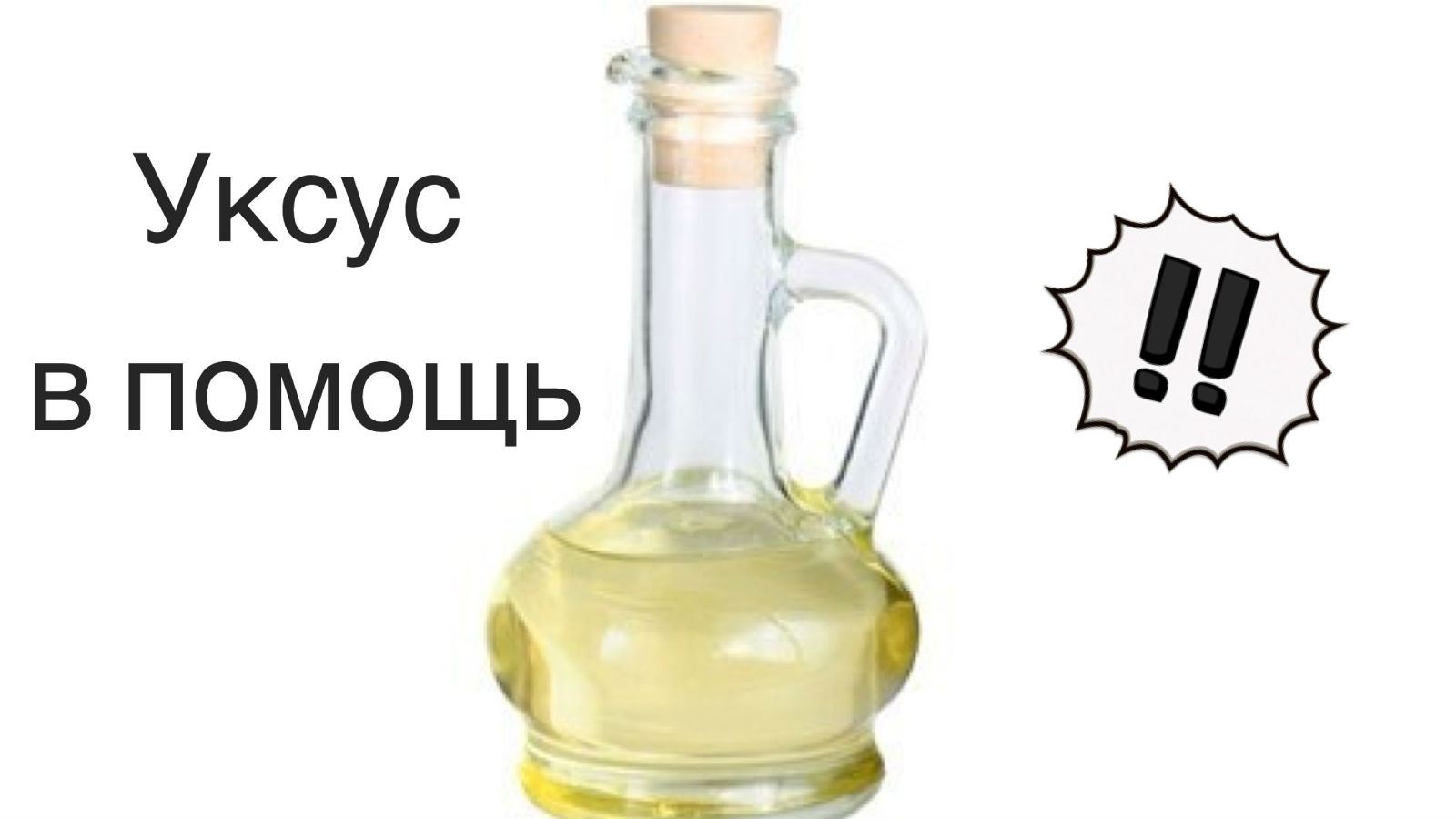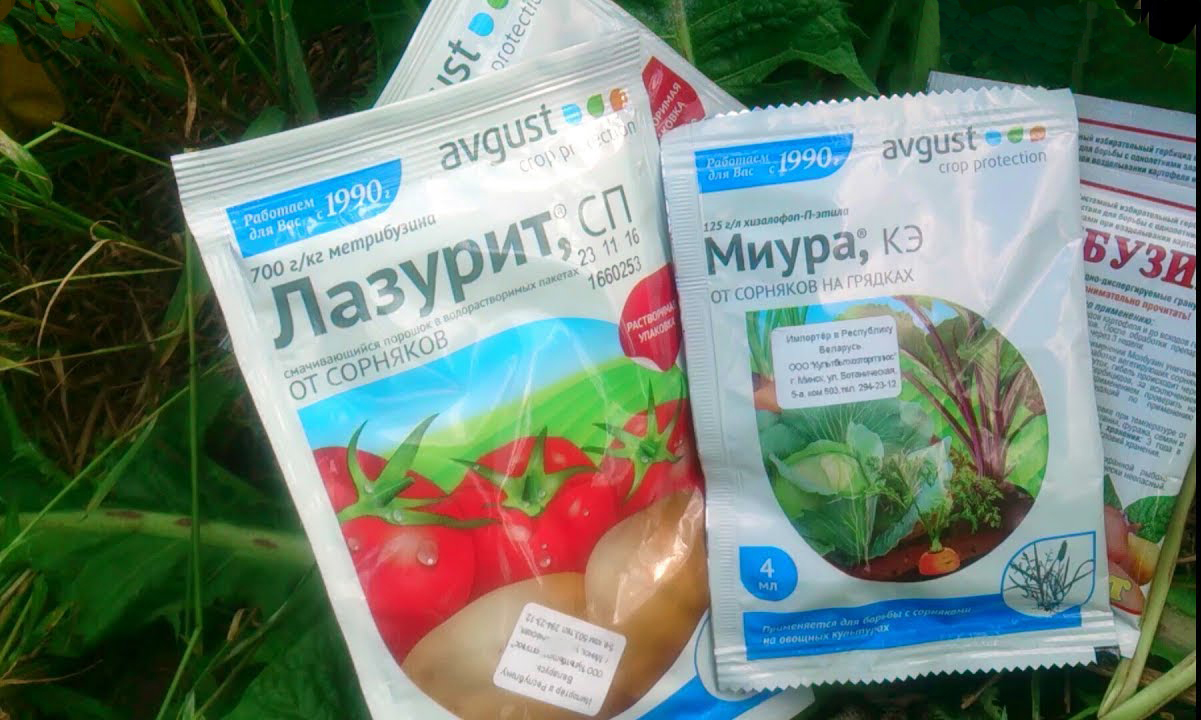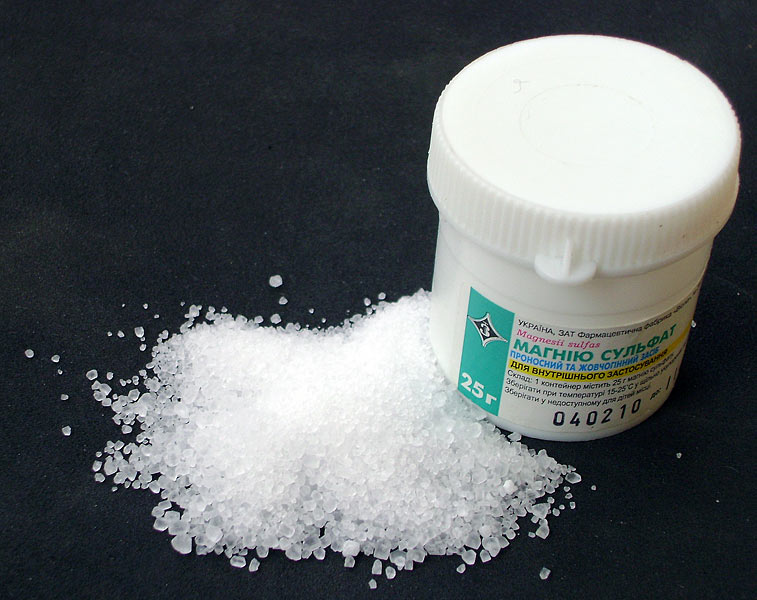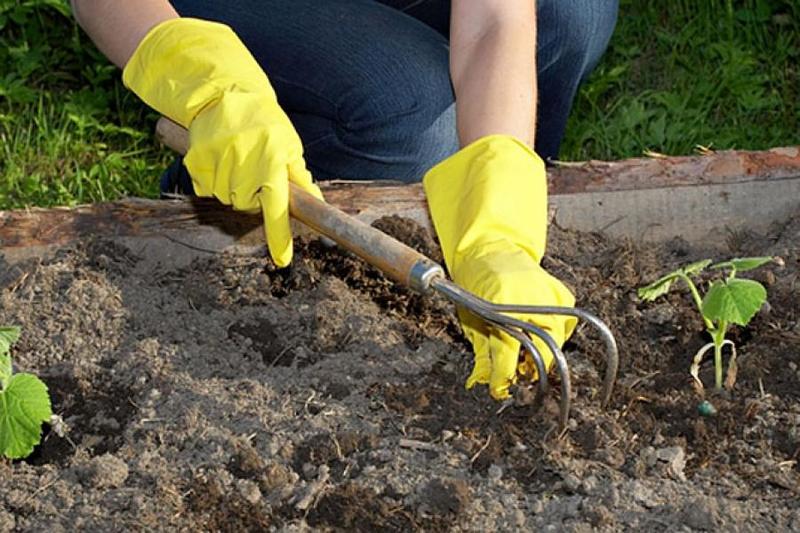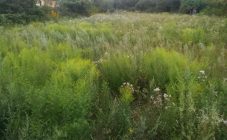Content:
- Plowing
- How to deal with grass by weeding
- How to deal with grass in the garden with folk remedies
- How to get rid of grass with herbicides
- Chemical control methods: advantages and disadvantages
- Substitution as another way of what to do to prevent grass from growing in the garden
- How to get rid of grass in your yard
With the onset of spring, many summer residents begin to bother not only with planting various vegetables and flowers, but also the fight against various weeds, such as willow, wheatgrass, nettle, wood lice and other herbs unpleasant for the gardener. If you give the weeds even a small chance of winning, they will fill the entire plot.
Weeds take nutrients, minerals and trace elements from the soil, thereby preventing the growth of cultivated plants. If weeds are not destroyed, then, growing, they will thicken the plantings, thereby creating a favorable environment for pests, and of course, they will shade the plant. You can fight weeds in different ways:
- plowing and digging;
- constant weeding;
- using chemical herbicides;
- folk remedies.
It must be remembered that the destruction of weeds forever is not possible. Some seeds can lie in the ground for more than 3-5 years and only then germinate, and some weeds will even grow from a small piece of root. Sometimes the best solution is to use herbicides.
Plowing
Better tools than plowing or digging to destroy perennial grasses are hard to find. Of course, this is not an easy procedure, but in order to have a clean vegetable garden, you will have to work hard. It is best to dig up with a pitchfork so as not to chop up the rhizomes of the weeds, otherwise a new plant will grow from even the smallest piece of root. The roots must be picked by hand and it is best to burn later.
How to deal with grass by weeding
Many do not want to add unnecessary chemicals to their site. In this case, weeding is a very effective, albeit very tedious, way of removing grass from the garden. Small areas can be weeded by hand. For larger territories you need:
- hoes;
- hoes;
- flat cutters.
It seems that it is so tricky in manual weeding, but it also has its own rules:
- you need to pull out the grass before the roots grow strongly;
- from wet soil (after rain or watering), weeds are easier to remove;
- you need to carefully select all the roots;
- it is better to weed before weed seeds appear;
- you need to weed constantly, and when cultivated plants grow up, they themselves will squeeze out the weeds.
How else can you get the grass out? The biological method can be applied. Every plant needs sunlight for optimal development. In its absence, all vital processes proceed more slowly or stop altogether. The root system, not receiving proper nutrition, works worse, and the plant dies from this. You can block the path of the sun's rays with any dense opaque materials. This could be:
- black film;
- roofing material;
- cardboard;
- boards.
All of these methods may be good, but each has its drawbacks.When covered with a black film, overheating of the soil may occur, respectively, cultivated plants will suffer. When covered with roofing material, various resins can be released, sometimes far from harmless. All these features must be kept in mind.
In addition to synthetic shelters, organic mulch can be used. To do this, sprinkle sawdust, freshly cut grass (make sure there are no seeds), chopped bark, hay or straw in a thick layer (preferably more than 10 cm).
How to deal with grass in the garden with folk remedies
To the question of how to destroy the grass in the garden, there is another answer - to use folk remedies. Sometimes it will not come out cheaper than buying herbicides, but the harm from these substances to a person will be less.
How can you poison the grass except for herbicides:
Soda
Perfectly fights against small grass, which makes its way between the tiles of the path and in other parts of the garden. To destroy unnecessary grass in the garden, you need to pour it abundantly with a solution of soda (10 tablespoons with a slide of soda, 2-3 drops of liquid soap and 1 tablespoon of vegetable oil). And to eliminate weeds between the tiles, you need to prepare a concentrated solution of half a kilo of soda and 8 liters of water.
You also need to remember that soda is an alkali, therefore, you should not prepare the solution in a metal bowl. The water temperature should be no higher than 50 ° С. It is necessary to capitalize the solution within 3 hours. In order for the solution to better adhere to the leaves, you can add 2-3 teaspoons of liquid or planed laundry soap to it.
Salt
It should be scattered around cultivated plants. Weeds will not grow in salty soil for some time.
With the help of table salt, burdock can be destroyed on the site. Experienced summer residents recommend cutting off the stem of the burdock with a knife, making a depression in the hemp and pouring salt into it. It will penetrate to the roots and the weed will die. It is possible that the procedure will have to be carried out several times.
Salt also helps in the fight against birch (bindweed). It is necessary to spray the plant with a strong solution.
Vinegar
If you spray the plant with acetic acid, it will burn and subsequently dry out. But, both a useful plant and a weed can dry out. Therefore, with such processing, you need to be extremely careful.
Vinegar + salt
A solution of salt and vinegar is very effective in weed control. This mixture can even kill perennial grasses. They can also be used to remove grass growing near the hedge, which is difficult to pull out with your hands.
Recipe:
- boil 1 liter of water;
- pour 2 tbsp into boiling water. tablespoons of salt and mix thoroughly;
- then add 5 tbsp. tablespoons of vinegar;
- irrigate unnecessary plants with a hot solution.
This operation is best done on sunny days. This is a very effective tool, but you need to understand that cultural plantings can also suffer, so it is not recommended to use it in the beds. It is better to use it near paths, fences or other areas without the necessary vegetation.
Vinegar + soap
To prepare such a solution, you will need liquid soap, grated household soap (dissolve in water) or dishwashing liquid.
Recipe:
- 1 liter of vinegar;
- 5 ml of soapy substance.
- Mix everything well and apply to the plant with a spray bottle or brush.
Vinegar + soap + salt
This is a very effective method, the recipe for which is as follows:
- vinegar - 3 l;
- salt - 1⁄4 tbsp.;
- liquid soap - 1-2 tbsp. spoons.
- mix everything and apply on weeds.
Citric acid + vinegar
This is a very easy recipe. For cooking, you need to shake 1 liter of vinegar and 1 tbsp. a spoonful of citric acid. Apply the solution as in the previous methods.
Herbicidal soap
You can make a light herbicide yourself. To do this, you need to combine salt, vinegar and grated laundry soap in equal parts, and then apply the resulting mixture to the weeds.
Kerosene
This remedy was used 100 years ago. Kerosene is good for killing weeds in carrot beds. It is necessary to spray the entire area with a combustible mixture (100 g per 1 m²). Kerosene will kill weeds, and it is safe for carrots.
How to get rid of grass with herbicides
Faster and more effective to fight grass with chemicals. Although it is not very good to use them in the garden, since, whatever one may say, it is poison. But sometimes there is no other choice.
The most demanded herbicides are:
- roundup;
- Hurricane;
- lapis lazuli;
- tornado;
- agrokiller.
The last two are more powerful, since they can completely clear the area of weeds. Moreover, the agrokiller is able to remove even shrubs and trees from the site.
Chemical control methods: advantages and disadvantages
More and more often they began to get rid of unnecessary grass with the help of herbicides. This is understandable, because manual weeding takes a lot of time and effort.
But first you need to figure out what herbicides are and what are their advantages and disadvantages.
For the first time herbicides appeared in the 19th century. This was the name of all the compositions, which were based on:
- copper sulfate;
- copper nitrate;
- sodium chlorate;
- ferrous sulfate;
- arsenite.
They were used to protect plants from weeds such as:
- cereals;
- sugar cane;
- tobacco;
- potatoes.
When using herbicides, the vital activity and other processes of the plant change.
There are two types of herbicides:
- systemic (once on the leaves, the drug spreads throughout the plant to the very root);
- contact (the part of the plant where the drug got to perishes).
In addition, these destructive substances are pre-emergence (they are introduced into the soil before planting cultivated plants) and post-emergence (they are processed according to the seedlings of plants that have reached a certain value)
Herbicide benefits:
- large areas can be etched;
- even the smallest weeds are removed;
- less time and effort is spent than with just weeding;
- a wide range of different drugs. You can choose the one that is more profitable for the site, based on the type of weeds.
Disadvantages of herbicides:
- more profitable are herbicides of continuous action, but when using them, not only weeds, but also all other plants will suffer;
- very toxic to humans. It is necessary to treat the area using protective equipment (rubber gloves, respirator, glasses).
Herbicides are produced in the form:
- emulsions;
- granules;
- mineral oil suspensions;
- powder;
- thinner.
They differ from each other in the way they are prepared and used. Each drug comes with instructions.
Of course, using herbicides, you can get rid of annoying weeds for a long time, but here you need to adhere to some rules.
- Strict adherence to dosage. If you do not follow the instructions, you can significantly contaminate the soil, which is fraught with human and animal health.
- It is better to treat large areas where potatoes and other vegetables are grown with chemicals. In small areas where berry bushes and fruit trees grow, it is better to use another method, how to remove the grass.
- Weeds need to be processed at a time of their active growth.It is not necessary to loosen or dig up the soil either before or during treatment, as this will interfere with the spread of the herbicide.
Substitution as another way of what to do to prevent grass from growing in the garden
What it is? This is to keep the land empty. If fast-growing plants (greens, onions, radishes) were planted, then either siderates should be sown in their place, or plants that have time to grow before frost (for example, black radish) must be sown.
As an option, combined beds can be considered a way to get rid of grass. If you correctly sow the seeds of various vegetables and flowers, you can not only get rid of the grass (it just has nowhere to grow), but also decorate the garden. In addition, some flowers not only bloom beautifully, but also repel harmful insects (for example, marigolds, calendula).
How to get rid of grass in your yard
Weeds grow everywhere: in the garden, and in the front garden, and in the yard on the lawn, and by the fences. From the first warm days you have to fight with it (and weeds often win). How to deal with grass on paths and near fences, there is an answer above. It is worth dwelling on how to prevent grass from growing on the lawn.
To get rid of weeds at least for a season, there are many ways. Which one to choose, each gardener decides for himself, but it is worth considering so that he does not harm cultivated plants. In this case, folk remedies and some herbicides have proven themselves well. When using the latter, the main thing is to carefully read the instructions, and then there will not be a single weed on the site.
